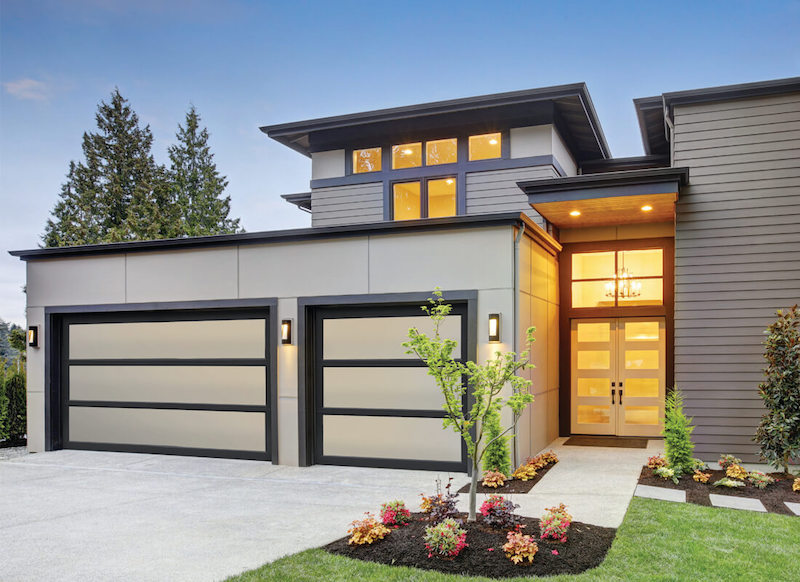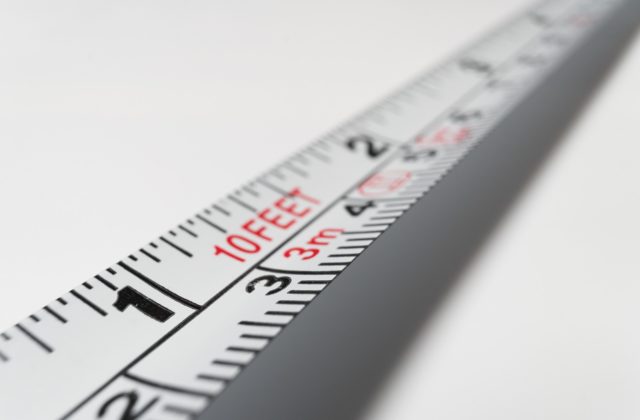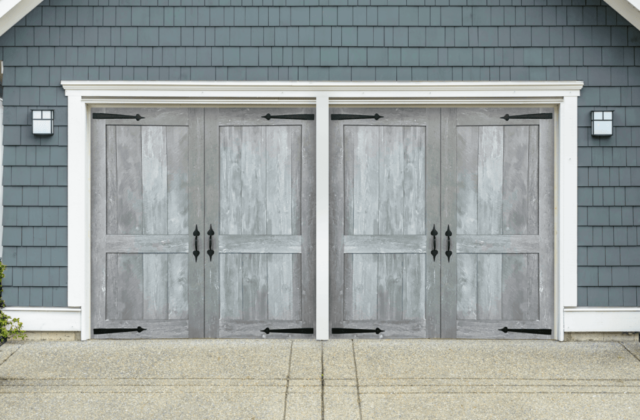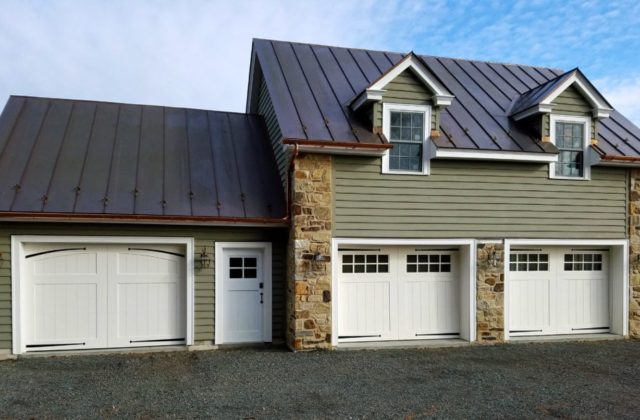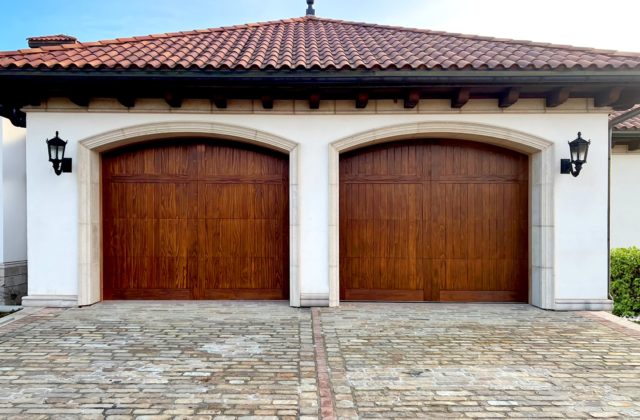You’ve seen countless garage doors in your life, but have you ever tried to identify their individual components? Understanding the parts of a garage door comes in handy when you’re customizing a new door or making repairs to your existing door. In this blog, we’ll identify the most important interior and exterior parts of a garage door. We’ve also included a garage door parts diagram to help you visualize the complex nature of garage door anatomy.
Exterior Parts of A Garage Door
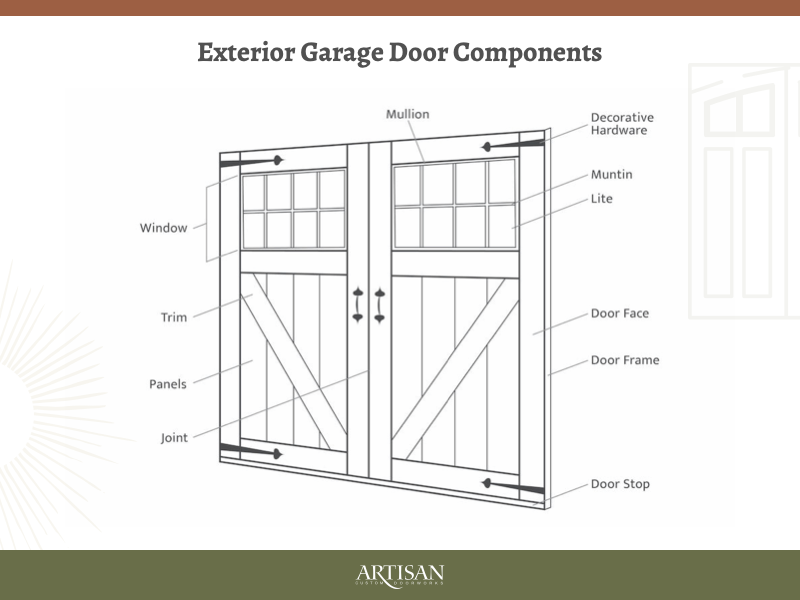
Decorative Hardware – These dress up the front of your door and set it apart from the rest of the garage doors in your neighborhood. The door diagrammed above features strap hinges and latches. You can also add things like pull handles, ring pulls, and clavos.
Door Face – This refers to the entire front of the garage door. It includes things like panels, trim, windows, and decorative hardware. Garage door faces are constructed from materials like wood, composite, vinyl, urethane, and glass. You can choose from a variety of finishes, including prime, paint, stain, and faux stain.
Door Frame – This is the part that the door face is mounted to. It provides reinforcement and helps keep the door sturdy and strong. Garage door frames are made from materials like steel, engineered lumber, and aluminum.
Door Stop – Also referred to as a weather seal, this attaches to the bottom of the garage door to seal out the elements. They’re available in a variety of materials and colors.
Door Joint – This is the point where the door opens to allow entry into the garage. Depending on the door, the joint may be true or faux.
Lites – Also referred to as panes, these are individual sections within garage door windows.
Windows – Many garage doors have windows, which offer design flair while also letting natural light into the garage. Garage door windows are typically made from polycarbonate, but decorative glass is also available.
Muntins – This refers to the dividers between the lites within a garage door window. Muntins can be simulated or true, depending on individual preference.
Panels – These are mounted onto the garage door face and are available in a wide variety of styles. These include V-groove, flat, raised, herringbone, tongue and groove, and many more. Swing doors have multiples of two panels, trifold doors have multiples of three, and bifolds have multiples of four.
Trim – These pieces are mounted on top of the panels to frame the door, divide it into parts, and separate windows from the rest of the door face. They come in many different styles, including cross bucks (X-bucks), V-bucks, Z-bucks (A-bucks), cross rails, sprung bucks, and more.
Interior Parts of a Garage Door
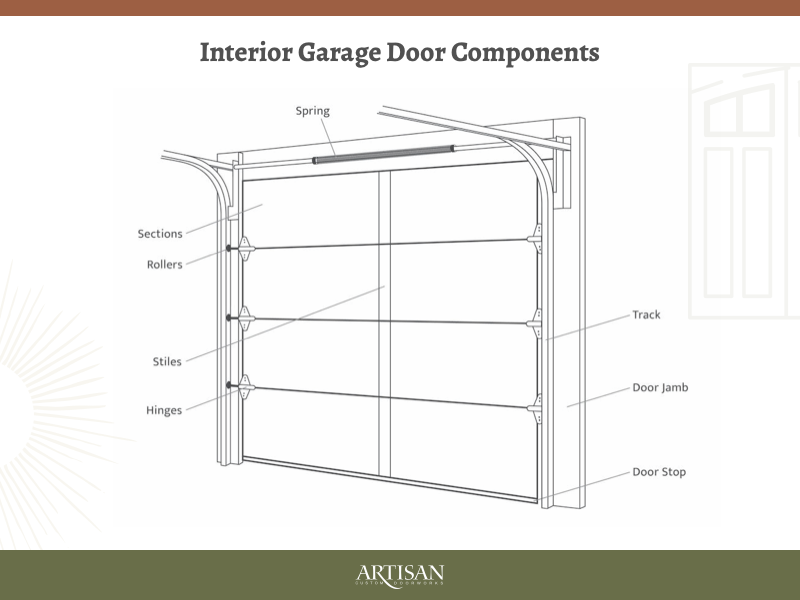
Hinges – These metal parts connect each garage door section and bend with the door as it opens and closes.
Jamb – This frames the garage door opening on three sides and is built into the garage structure.
Rollers – These small parts help the door move smoothly through the track as it goes up or down. They’re typically made from nylon or steel.
Sections – These are the horizontal pieces that roll up or down when operating an overhead door. The area where the sections meet is referred to as the joint.
Spring – This counteracts the force of gravity on the garage door so it can be opened by hand or with a garage door opener. Most doors have torsion springs that are located parallel to the top of the door.
Stiles – These are vertical structures on the back of each garage door section. Depending on the door, there are center and end stiles for enhanced support.
Track – These metal components house rollers that propel the garage door from a closed, vertical position to a horizontal position parallel to the garage floor. There are several track options to choose from, including standard, low headroom, high lift, vertical, and roof pitch.
